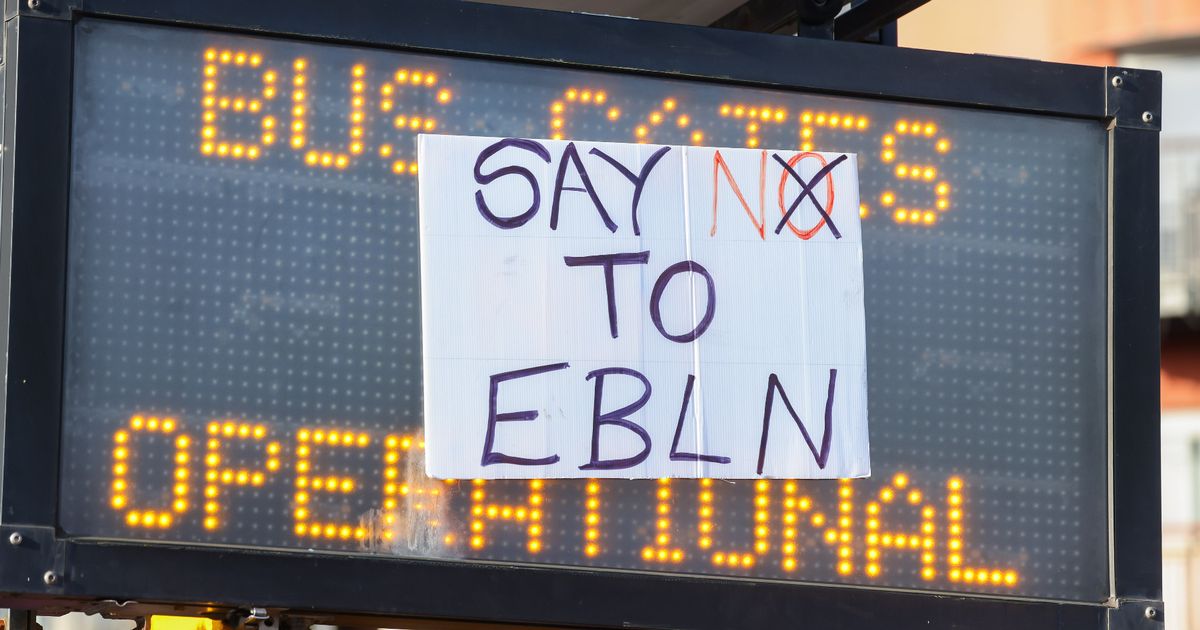“The name itself – ‘liveable neighbourhood’ – is an insult to a community that has lived here for generations”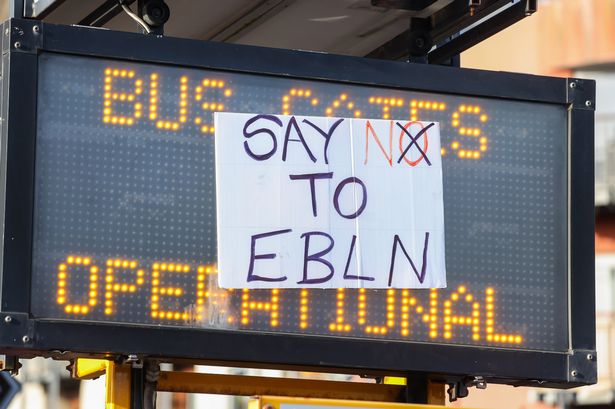 A protest sign on the electronic signboard in Barton Hill as the East Bristol Liveable Neighbourhood nears completion(Image: PAUL GILLIS / Reach PLC)
A protest sign on the electronic signboard in Barton Hill as the East Bristol Liveable Neighbourhood nears completion(Image: PAUL GILLIS / Reach PLC)
People living in the heart of the new East Bristol ‘Liveable Neighbourhood’ say they feel the city council has ‘completely failed in its duty of care’ for residents and businesses, as the community in Barton Hill prepares for the scheme to be completed.
The council’s six month trial to assess the impact of closing off a series of roads around Barton Hill, Netham Park, Redfield, Lawrence Hill and parts of St George is set to begin at the start of next week, when the cameras enforcing three bus gates in Barton Hill are switched on.
The creation of the ‘Liveable Neighbourhood’ was supposed to be completed by the end of last year, but a series of direct action protests held up the physical work to create the bus gates, new no entry roads and junctions, and what are called ‘modal filters’ – which are placed across roads and let people walk, cycle, scoot or ride motorbikes through, but not drive cars or other vehicles.
The city council announced last week that the bus gate cameras in Barton Hill will be live from Monday, June 2, with only buses, taxis, motorcycles and emergency vehicles – and some local residents who have successfully applied for exemptions – allowed to pass through the virtual gates.
The announcement has been met with renewed anger from those residents in Redfield and Barton Hill who have been consistently opposing the scheme, and calling for the council to rethink the project for more than a year now.
“The name itself – ‘liveable neighbourhood’ – is an insult to a community that has lived here for generations,” said Samira Musse, from the Barton Hill Activity Club. “ Bristol City Council suggesting that it wasn’t liveable before?
“These three busgates appear designed to generate revenue at the expense of the local community, residents who are already struggling,” she added.
READ MORE: Bristol council confirms date controversial bus gates will go liveREAD MORE: Police issue apology to Barton Hill residents for early morning bus gate installation
Many in Barton Hill say there has been a fundamental breakdown in the relationship between the residents and the city council, both over the Liveable Neighbourhood plan, but even more over the way it has been implemented.
Earlier this month, Avon and Somerset police apologised for its role in the controversial operation to install the bus gates, which saw scores of police officers arrive in Barton Hill at 3am on the morning of March 13, to accompany council contractors to begin the work. And city council leader Cllr Tony Dyer has also now admitted ‘regrets’ at the way the council has gone about consulting with local residents and implementing the project.
For Melissa Topping, one of the most vocal opponents of the EBLN, the final announcement that the bus gates will be going live in a matter of days is another reminder of how her local area, and her life, has changed.
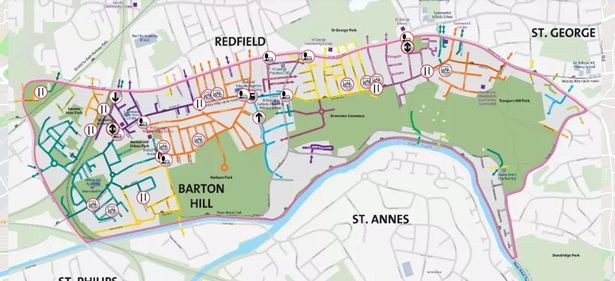 A map of the east Bristol liveable neighbourhood scheme(Image: Bristol City Council)
A map of the east Bristol liveable neighbourhood scheme(Image: Bristol City Council)
The EBLN project has effectively created seven zones in an area stretching from Lawrence Hill to St George and south to the Feeder Canal at Barton Hill. Each of the zones is made up of roads that can still largely be driven around in a car, but direct travel by car or other vehicle between them is now stopped.
In the narrow Victorian terraced streets of Redfield and Barton Hill that’s a challenge – both for postal workers and delivery drivers, waste lorries and emergency services, as well as for residents in cars themselves.
The aim is to make the roads more useable and ‘liveable’ for people walking and cycling, and ultimately to reduce the amount of journeys made by car. In the short term the creation of the zones stops up short-cuts and rat-runs used by drivers passing through the area, forcing them onto the A420 main road – but also forces local drivers out onto the main road too.
“We’re all feeling completely let down by our councillors and Bristol City Council,” said Ms Topping. “Serious issues we’ve been raising for two years are now occurring and we are still being ignored.”
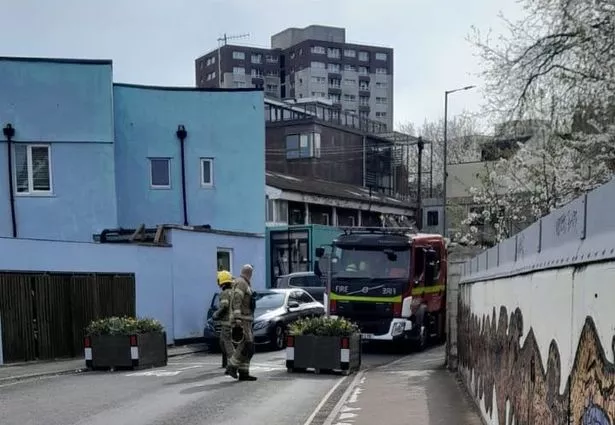 Fire crews try to drop a recently-installed bollard at a new modal filter on Ducie Road in Barton Hill, days after the installation of the East Bristol Liveable Neighbourhood there(Image: Samira Musse)
Fire crews try to drop a recently-installed bollard at a new modal filter on Ducie Road in Barton Hill, days after the installation of the East Bristol Liveable Neighbourhood there(Image: Samira Musse)
For those vehemently against it, nothing can go right for the EBLN implementation – even down to the bright red paint used to mark the bus gate on the road now fading and washing off in the recent rain.
“We feel the council has completely failed in its duty of care for its residents and businesses.
“Tony Dyer has admitted having regrets at how it’s been done, and admits that they didn’t check consultation was done properly, despite us continuously voicing it hadn’t, should mean this is removed before further harm, or a major disaster occurs.
“Disabled and elderly have already seen a drop in support networks,” added Ms Topping, who said the impact on everyday life is already being felt in Barton Hill and Redfield, where those short car journeys around the area – the proclaimed target of the council – are increasingly difficult.
“I myself have had a huge drop in friends being able to pop in and help out. They no longer have time thanks to the traffic and detours. They can no longer pass easily on route to work or home. Now meaning I’m having to pay carers for more help than previously. With carers also often now being late at no fault of their own.
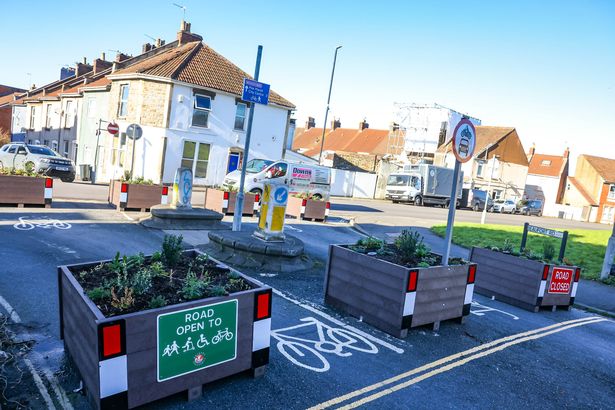 The western end of Beaufort Road in Redfield, which is currently only for bikes, scooters and pedestrians as part of the Liveable Neighbourhood trial in East Bristol(Image: PAUL GILLIS / Reach PLC)
The western end of Beaufort Road in Redfield, which is currently only for bikes, scooters and pedestrians as part of the Liveable Neighbourhood trial in East Bristol(Image: PAUL GILLIS / Reach PLC)
“I am hearing from many others with the same problems. Families will no longer be able to collect elderly or disabled residents to take them for hospital and GP appointments with ease. Having to go the long way round to collect them, then again to get them to appointments, the same to get them home, and again to get themselves home, meaning this is unachievable in either a lunch break or small window,” she added.
When the council announced last week the bus gates were about to go live the announcement came with more mitigation, in the form of a ‘boosted range of travel offers and bus gate exemptions’, to soften the blow of not being able to drive as freely around the area as before.
The travel offers are aimed at encouraging people to find alternatives to those car journeys. Every household has already received £100 of First Bus tickets, and now there are £250 more, or £150 to spend on a reconditioned bike, for households which receive certain benefits.
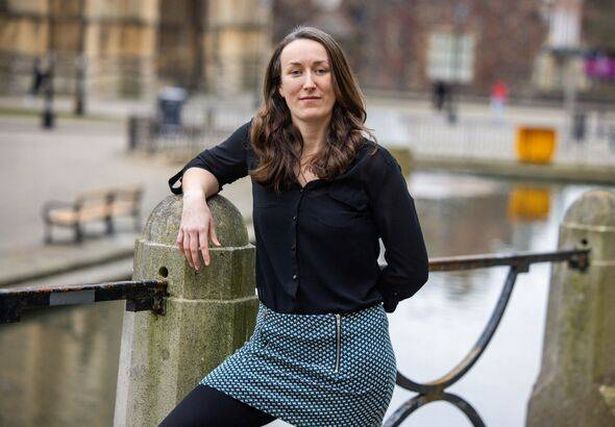 Cllr Heather Mack(Image: (Image: Paul Gillis ))
Cllr Heather Mack(Image: (Image: Paul Gillis ))
Bristol City Council’s deputy leader Cllr Heather Mack said she recognised it would be a big change for a lot of people. “There is no doubt that for many people it will be a big change. We hope that, in combination with the other trial measures, the bus gates will help to make the streets safer and less polluted.
“By stopping drivers from cutting through residential roads, and by encouraging more people to walk, wheel and cycle for shorter journeys or to use public transport, including the new number 16 bus that goes right through the trial area, local residential streets should be safer and quieter,” she added.
Fadumo Farah, a tenants rep at Barton House, said the issues with the council over the implementation of the EBLN are similar to the ones she and her neighbours had over the evacuation and temporary re-housing of residents of the tower block – and they were around trust, communication, respect and engagement.
“While the aims of improving air quality and encouraging active travel are widely supported in principle, the way this scheme has been implemented has left many of us feeling shut out, restricted, and unfairly penalised,” she told Bristol Live.
READ MORE: What’s changed in Bristol in the year since the Greens took control of cityREAD MORE: Opinions split on plan for South Bristol ‘liveable neighbourhood’
“Barton Hill now has three bus gates concentrated in an area that is already among the most deprived in the city. Meanwhile, more affluent areas like Clifton, which suffer from heavy traffic and congestion, remain unaffected. This disparity has not gone unnoticed and raises serious concerns about fairness, inclusion, and equity.
“Our community has become increasingly vocal in its opposition to the EBLN scheme,” she said. “We feel strongly that this is not the right approach for Barton Hill and we are now calling for the scheme to be fully removed. Residents were not given a genuine voice in the design, rollout, or consequences of this policy. For many, the impact has been one of isolation, stress, and confusion.
“The council also failed to notify us when major visual changes such as the red road markings were introduced. I was told this was to ‘avoid disruption’, but in reality, it undermined trust and only furthered the feeling that decisions are being made without regard for local people.
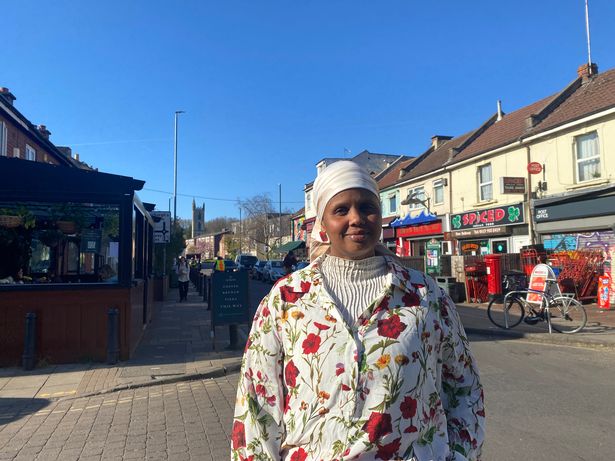 Fadumo Farah(Image: John Wimperis)
Fadumo Farah(Image: John Wimperis)
“Although the Lawrence Hill Forum was created after the EBLN process began, it now plays an important role in representing local voices. It’s disappointing that more hasn’t been done to engage with the forum, especially as the scheme continues to affect residents on a daily basis. If this kind of initiative is to succeed anywhere, it must be co-designed from the ground up, not retrofitted once opposition grows,” she added.
Not everyone in the EBLN area is against the project – there are a significant number who support it, and want their streets to have no through traffic. Most mentions on social media prompt comments of support as well as comments against. Those against are still hopeful it will be scrapped or radically scaled back.
Fadumo Farah said a number of low-traffic neighbourhoods across the country have already been taken out again. “These cases show that local authorities can and do reverse decisions when schemes do not meet the needs of the communities they serve,” she said.
“Barton Hill is a strong, resilient neighbourhood. What we truly need is investment in affordable housing, school places, and support for workers in frontline sectors not restrictions that feel imposed and isolating. We are not against environmental progress. But progress cannot come at the expense of those already struggling.
“There is still time to correct this. Removing the EBLN would be a powerful first step in restoring trust, listening to residents, and pursuing solutions that include rather than exclude us.,” she added.
 Bristol Live WhatsApp Breaking News and Top Stories
Bristol Live WhatsApp Breaking News and Top Stories
Join Bristol Live’s WhatsApp community for top stories and breaking news sent directly to your phone
Bristol Live is now on WhatsApp and we want you to join our community.
Through the app, we’ll send the latest breaking news, top stories, exclusives and much more straight to your phone.
To join our community you need to already have WhatsApp. All you need to do is click this link and select ‘Join Community’.
No one will be able to see who is signed up and no one can send messages except the Bristol Live team.
We also treat community members to special offers, promotions and adverts from us and our partners. If you don’t like our community, you can check out at any time you like.
To leave our community, click on the name at the top of your screen and choose ‘Exit group’.
If you’re curious, you can read our Privacy Notice.
Click here to join our WhatsApp community.
